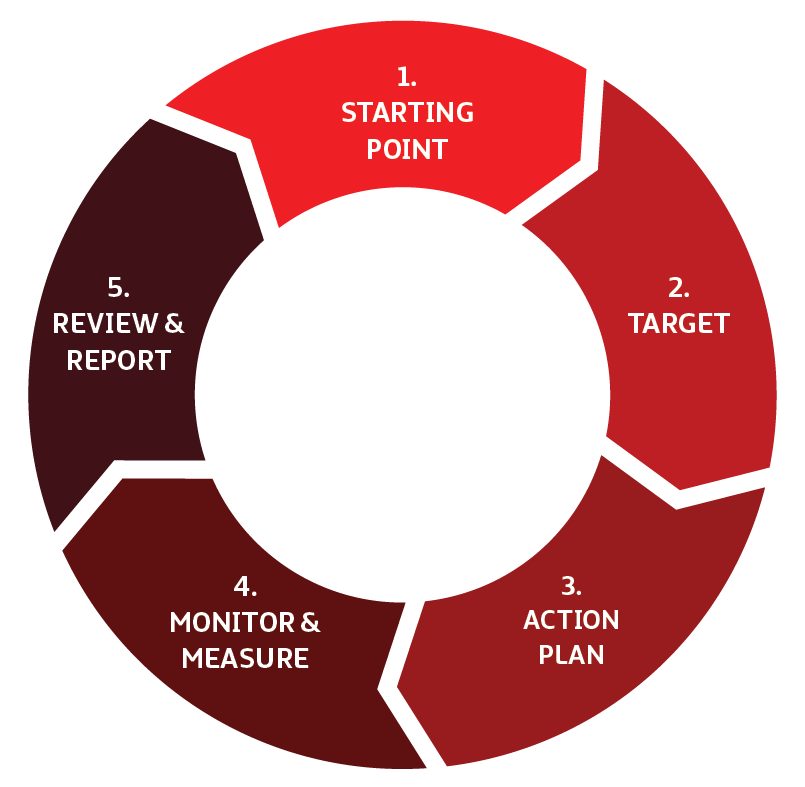Guide to Waste Management - PDF Download
How to minimise waste, lower emissions and reduce costs in your tourism business
Text-to-speech reader:
Business Guidance
Part 2: A Leaner & Greener Roadmap

The diagram below shows a good approach to waste management. You will see that it is the same cycle that would apply to the management of any process or system within your business.

|
Step 1 : Appoint a Green Champion or Green Team |
|
Appointing a Green Champion or a Green Team is the very first step in reducing waste and costs. In a small business, one person may be responsible for this – a Green Champion. In a larger business, it is wise to bring a team of people together – a Green Team. They must have both the responsibility and authority to drive your cost-saving and carbon-saving ambitions. Team members may also need training, meetings, resources and above all time to lead through the rest of the steps below. |
|
Step 2 : Gather data on Annual Waste Volumes (kg) and Waste Costs (£) in your business |
|
The very first job of your Green Champion or Green Team is to establish your Starting Point i.e. find out how much waste, in kg, that your business generated in the last year and how much that waste cost (£). You can get this information by reviewing your waste collection bills for the previous year. (Log this data in the Waste Use & Costs Template - see Section 4.1) |
|
Step 3: Establish your benchmark against which you will measure future performance |
|
Benchmarking allows you to track waste volumes and costs over time. It allows you track your own performance and also to compare your business against others. When you have worked out your annual costs and waste volumes, you can establish kg and cost per person/per metre/per cover/per room/per ticket – whichever benchmark is the most relevant for your business and that you can track consistently over time. (Enter your Benchmark Measure in the Waste Use & Costs template see Section 4.1) Tip: Make note of how you calculate your benchmark so that you and other team members calculate it in the same way each time. This is the only way to ensure you have comparable data. |
|
Step 4: Conduct a Waste Audit |
|
You need to understand where waste is used in your business and how waste is handled in your business. A Waste Audit will help you do this. There are three elements in the Waste Audit: i. Inspect all bins and the bin collection area |
|
Step 5: Analyse data and develop your Waste Action Plan |
|
By this stage, you will have great information on where waste is generated in your business, how it is handled, and how much it costs. You can now determine the best ways to eliminate and reduce waste without impacting on the visitor experience or business processes. The plan should include immediate and short-term actions as well as medium to long-term ones. It is important to set goals that are specific and measurable. Be clear on who is responsible for each action and the deadline by which it is to be complete. |